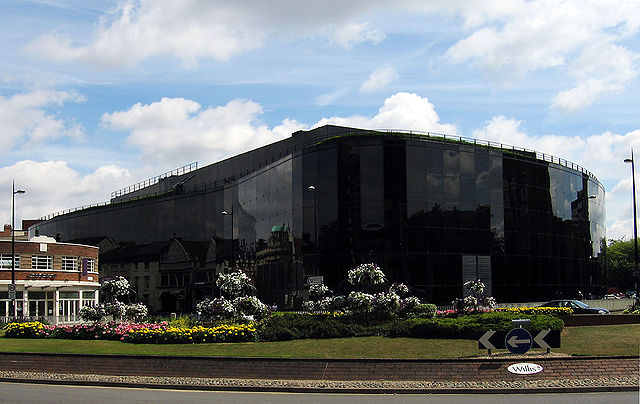 |
This is a file from the Wikimedia Commons. Information from its description page there is shown below.
Commons is a freely licensed media file repository. You can help.
|
Willis Faber and Dumas Headquarters, in Ipswich, England (also known as the 'Willis building'). This building was one of Norman Foster's first major commissions. Constructed between 1970 and 1975, it is now a landmark in the development of the 'high tech' building style.
The building houses 1300 office staff in open plan offices spread over three floors. The central escalator well, leads up to a roof top staff restaurant surrounded by a roof top garden ( 360 panorarma).
The bulbous floorplan of the office block reflects the layout of the available site in the centre of Ipswich, which is sandwiched between several road junctions.
The centre of the building is constructed from a grid of concrete pillars, 14 meters apart, supporting cantilevered concrete slab floors. The exterior is clad in a dark smoked glass curtain wall.
Keywords: Norman Foster, Willis Faber and Dumas building, Ipswich, high tech architecture, office building, curtain wall
| Photograph © Andrew Dunn, 11 August 2005. |
| Website: http://www.andrewdunnphoto.com/ |
|
I, the copyright holder of this work, hereby publish it under the following license:
|
|
|
File usage
The following pages on Schools Wikipedia link to this image (list may be incomplete):
SOS Childrens Villages aims to make Wikipedia suitable for young learners. The world's largest orphan charity, SOS Childrens Villages brings a better life to more than 2 million people in 133 countries around the globe. Find out how you can help children in other countries.


